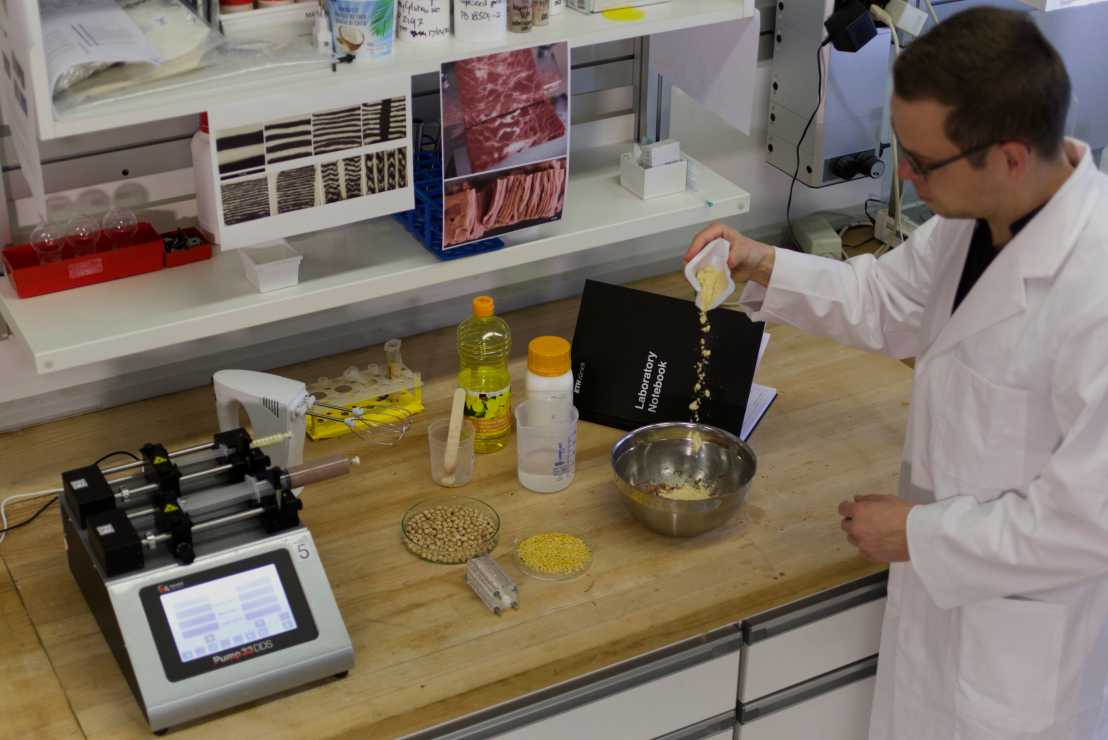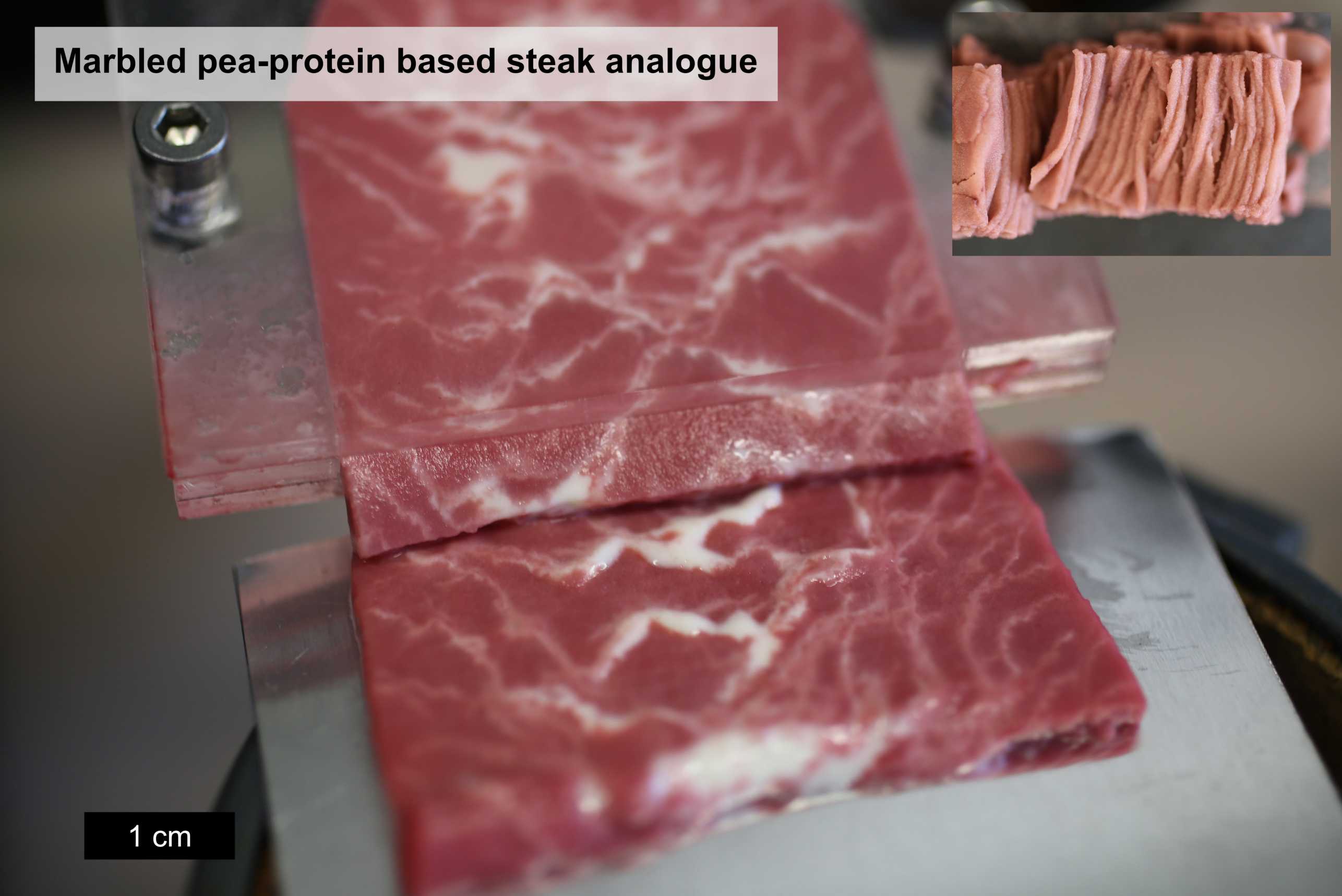Martin Hofmann - X14 foods
Marbled plant-based meat analogues
In the context of climate change, the latest UN report highlights the importance of reducing greenhouse gas (GHG) emissions. One strategy relies on changing dietary habits from GHG-intensive meat-centered diets towards plant-based diets.
Encouraging consumers to switch from meat to plant-based diets can be facilitated through the preparation of meat analogues mimicking the appearance, mouthfeel and juicy taste of meat pieces. The vast majority of meat analogues available today which mimic processed meat, such as burger patties, sausages and meat balls, successfully recreating the sensory and gustatory experience. High added value meat pieces such as rib-eye steak have not been mimicked successfully yet owing to the complex combination of structure and visual appearance.
Two main characteristics of such whole cut meat pieces make the production of analogues thereof particularly difficult. Firstly, meat features a hierarchical structure defining the mouthfeel. Secondly, the quality of meat pieces is related to its marbling, the inclusion of fat domains within the meat matrix. The higher the marbling, the more valuable the piece of meat is perceived by consumers, with Wagyu beef being an exponent of this. One approach to obtain the marbling is to deposit fat strands using additive manufacturing equipment, then called bioprinting. Although one obtains a marbled cross-section, the shortest length scale in this technique will be dictated by the nozzle diameter and deposition speed and does not span the real-meat length scales.
We propose a technological platform featuring several key innovative aspects allowing for the scalable production of marbled plant-based analogues of whole cut meat pieces. The platform developed during my doctoral studies consists of a novel extrusion die with programmable feed sequences addressing the two-fold difficulty of creating hierarchical structures and desired appearance. The proof of concept brought forward relies on a two-stage process.

Martin Hofmann
